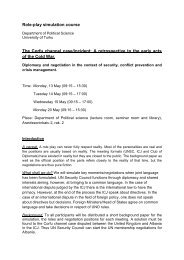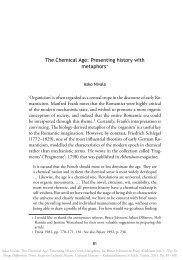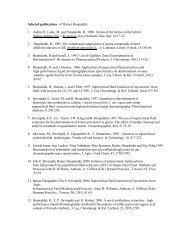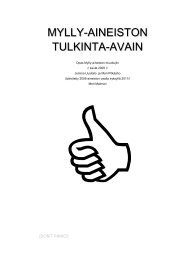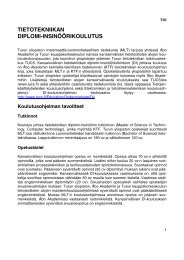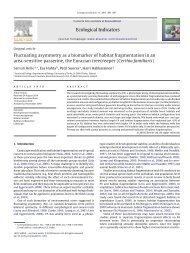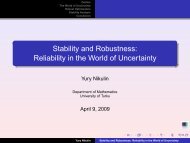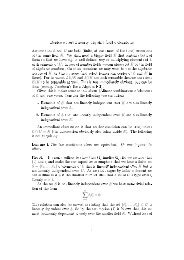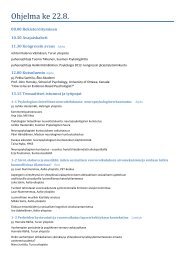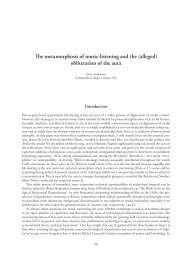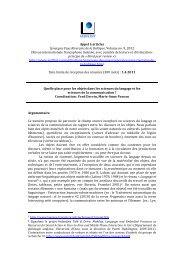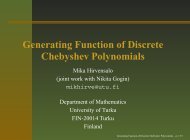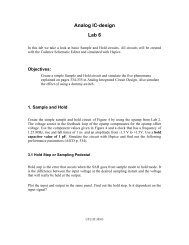The Chemical Age: Presenting history with metaphors∗
The Chemical Age: Presenting history with metaphors∗
The Chemical Age: Presenting history with metaphors∗
You also want an ePaper? Increase the reach of your titles
YUMPU automatically turns print PDFs into web optimized ePapers that Google loves.
<strong>The</strong> <strong>Chemical</strong> <strong>Age</strong>to address.<strong>The</strong> fact that historical discourse must invoke some metaphorical structuresof language does not mean that it becomes unscientific. Paul Ricœurhas emphasized the truth claim peculiar to metaphors. That is, metaphorscan be understood as a way to make reality meaningful by seeking similaritiesbetween different objects. Metaphors build heuristic models betweenthings, and thus they reveal new possibilities of seeing new relations ofshared properties between different fields of reality. Hence, metaphors arenot just emotional utterances, but they discover and disclose new cognitiveand semantic potentialities implicit in language. 77 Certainly, metaphorscan propose more or less adequate models, but if one can speak of ‘bad’metaphors, this implies that all metaphors make claims to truth.In this sense, the natural sciences also rely on metaphors to make theirfindings generally comprehensible. For example, when describing an atom,it is not possible to avoid using metaphorical models. It is necessary touse expressions like ‘atomic orbit’ and ‘electron cloud’. <strong>The</strong> metaphoricalmode of ‘electron cloud’ is necessary to explain the function of an atom. Itdoes not turn physics into unscientific poetry. Similarly, when a historianspeaks of ‘source’ s/he is not literally wandering in some desert lookingfor a reliable water source, but s/he is referring metaphorically to thenecessity of disclosing the source of knowledge. <strong>The</strong> metaphor ‘source oftruth’ presents linguistically the self-referential nature of primary sources.Confirming historical knowledge is always dependent on source material.A contemporary prejudice concerning the past can never overrule thetestifying power of a primary source. On the contrary, a primary sourcecan insist that we must correct our previous prejudice, because it tells usnew things concerning a past epoch. If someone doubts the truth of ahistorical presentation, s/he must base the critique either on some othersource material or on a different interpretation of the same source. This isthe sense of the metaphor ‘primary source’.Leibniz’s utopia of a universal language that could replace imprecisenatural languages has remained unrealized. 78 If <strong>history</strong> writing were requiredto be metaphor-free, it would have to abandon expressions like77 Ricœur 1976, pp. 51–53, 66–67; Lakoff & Johnson 1980, pp. 195–6.78 Chaouli 2002, p. 9.Asko Nivala: <strong>The</strong> <strong>Chemical</strong> <strong>Age</strong>: <strong>Presenting</strong> History <strong>with</strong> Metaphors. In: Bruce Johnson & Harri Kiiskinen (eds.): <strong>The</strong>y DoThings Differently <strong>The</strong>re. Essays on Cultural History. Cultural History – Kulttuurihistoria 9. k&h, Turku, 2011. Pp. 81–108.103




